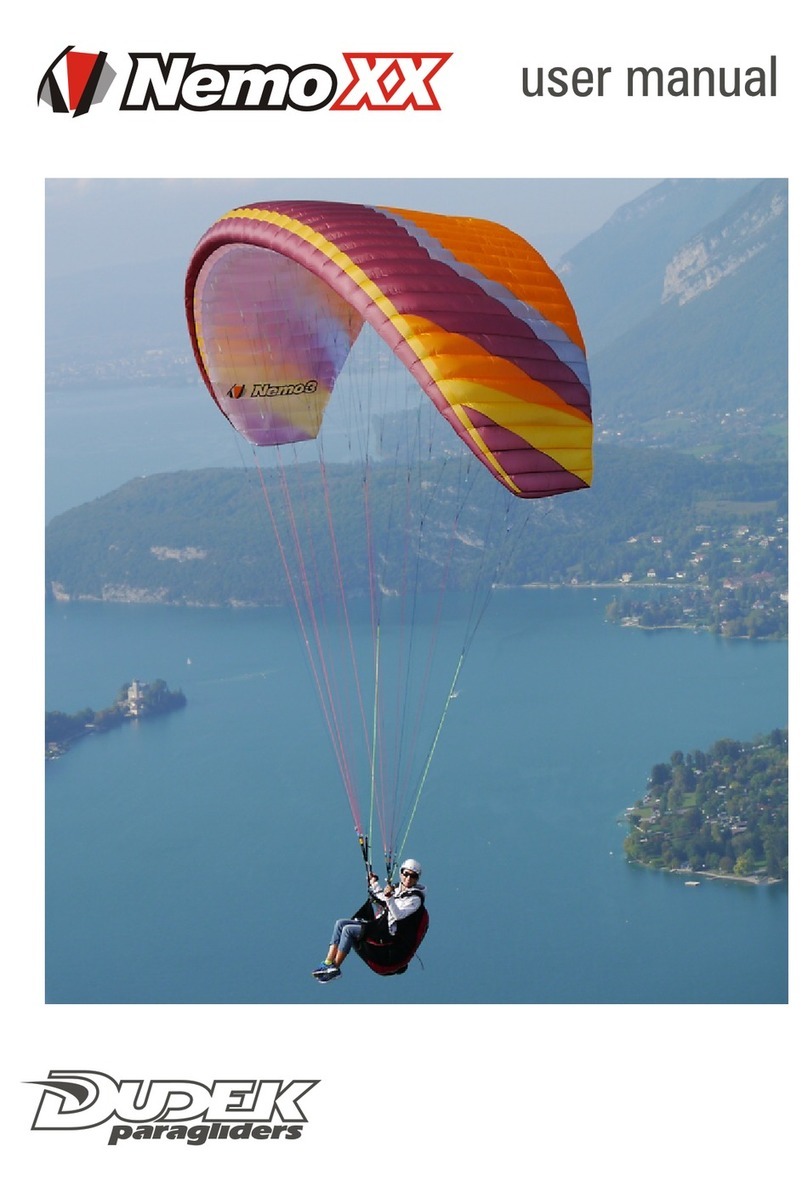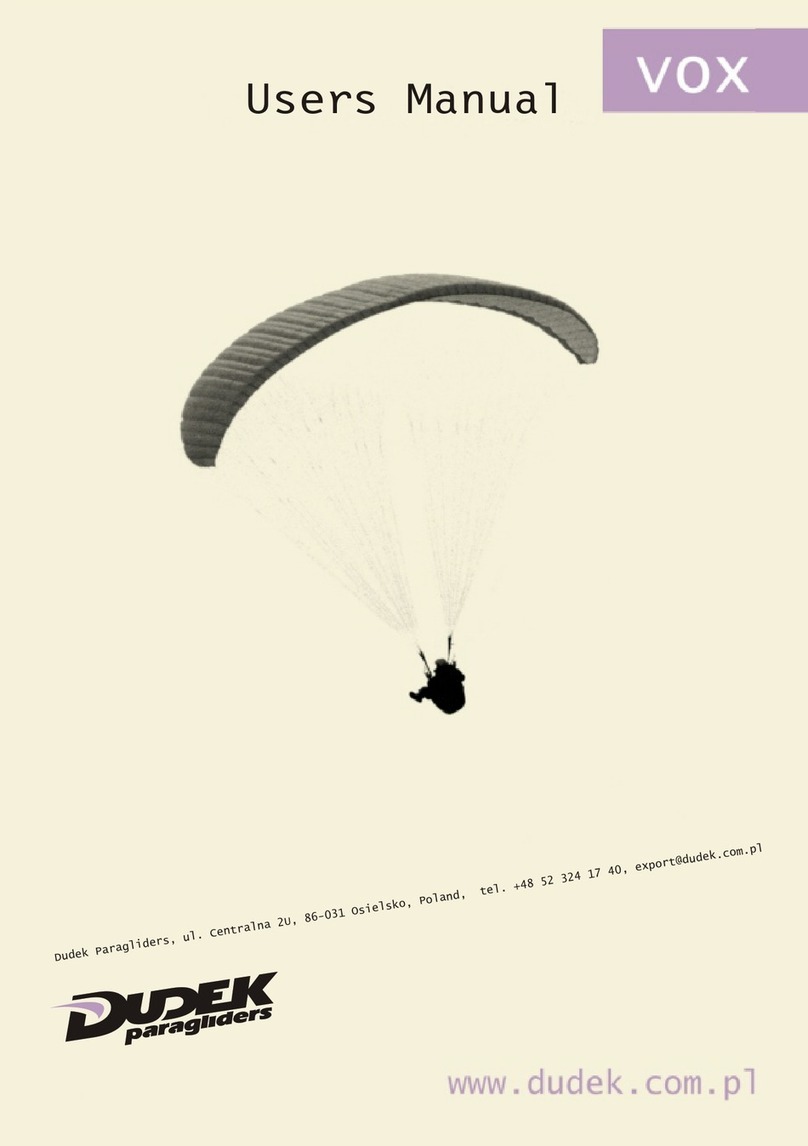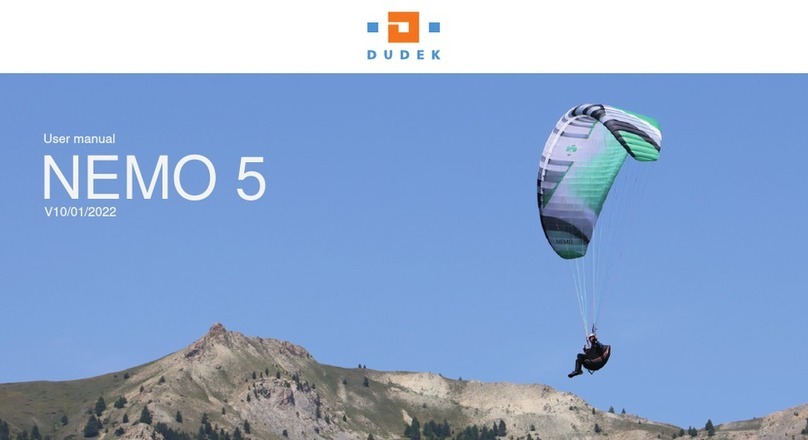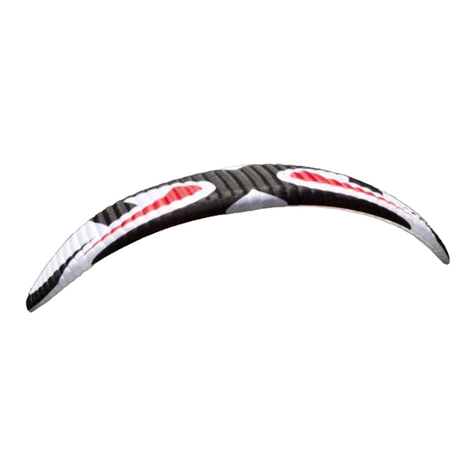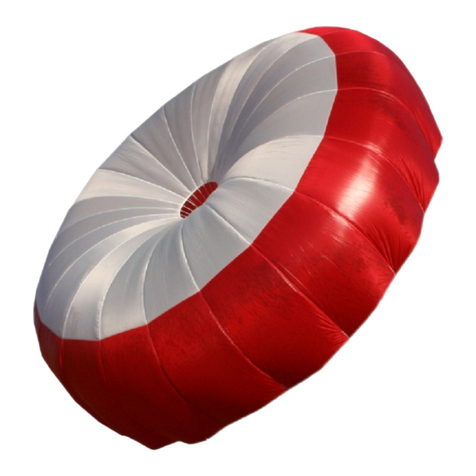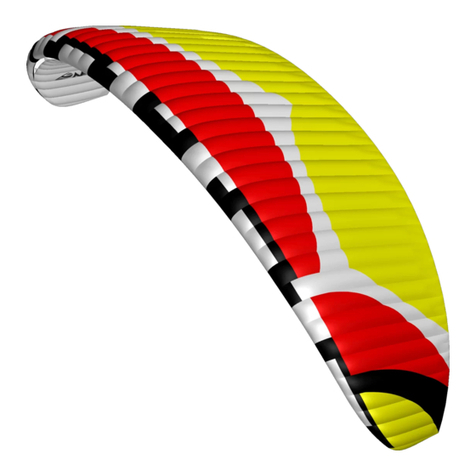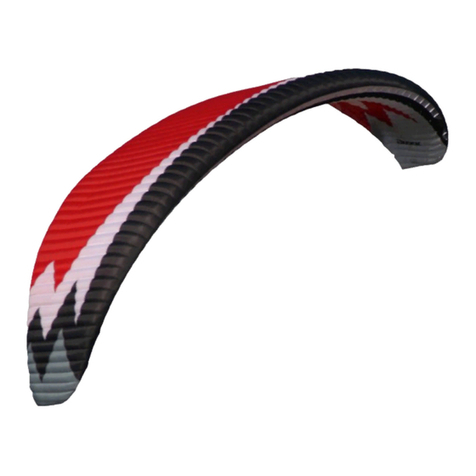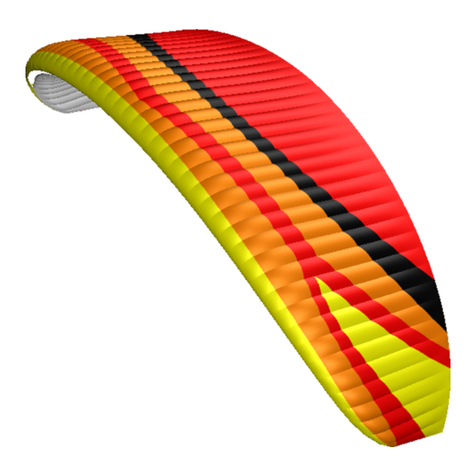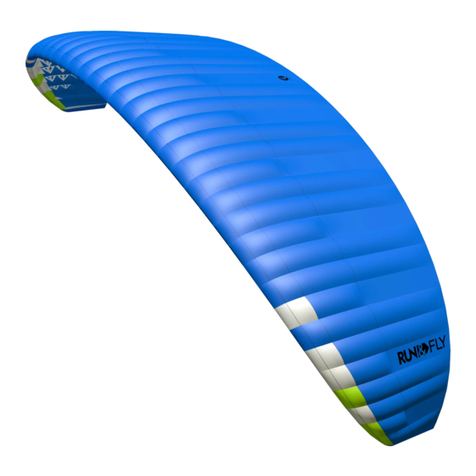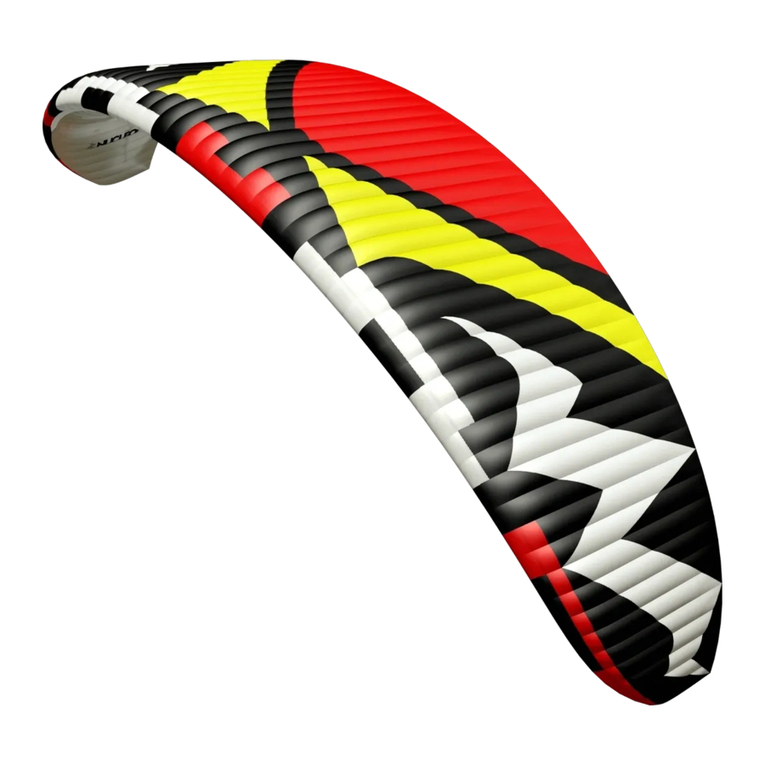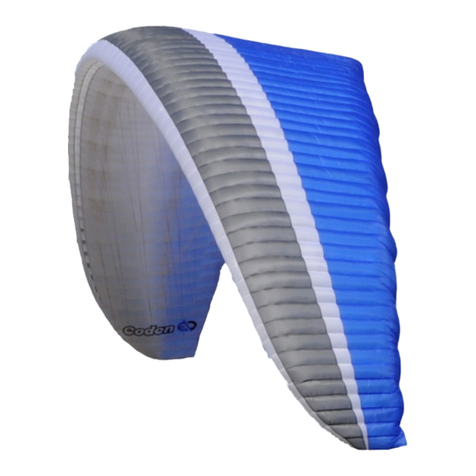
Another novelty is the ALC+ (new version of the ALC steering system),
allowing safe and effective steering at fast trimmer settings withot using main
brakes. Additional improvement is possibility to fix the system to the risers
with magnetic clips, so that in will not get tangled. Ideally the system should
be installed only when the pilot graduates to use the other (faster) half of the
trimmers.
Our factory-installed TEA system allows for controlling the flight direction at
any time, with any speed – so far this is the safest way to preserve or change
the flight direction at high speeds.
Even as the Universal was designed in order to keep all features of the
classic paraglider, application of the reflex aerofoil adds more beneficiary
traits. First of all, using that profile means that the wing stability does not
depend exclusively on the pilot. It maintains a stable pitch attitude, rising and
falling through thermals while remaining stable above your head, without
need for so much pilot input. Generally speaking the reflex profile is a special
kind of aerofoil section. The specific static pressure distribution creates a
situation where at low attack angles, only the wing fore part (some 60% of the
chord) is producing lift, while the rear 40% of the chord creates an effective
stabiliser against excessive decrease of the attack angle. The trimmer system
allows for considerable raising the rear part of the airfoil, thus effectively
reducing its projected chord and surface area by some 30%, giving the
paraglider a higher wing loading and increasing its speed. The centre of
pressure also moves forward, adding enhanced pitch stability. Such a shift of
loading gives the Universal an exceptional tuck-resistance and increases its
projected aspect ratio, resulting resulting in much better performance,
especially at high speeds. When greater lift is needed, you close the
trimmers, thus modifying canopy to get airfoil operating on its entire chord.
The result of our work is a 100% reflex paramotor paraglider with perfect
performance, exemplary safety, and steering characteristics of classic
paragliders. We proudly present you with the exceptional Universal
paraglider, suitable for the beginner and recreational pilots, whether free of
paramotor flying.
2.2 STRUCTURE
The Universal 3D body was designed in our CSG (Canopy
Shape Guard) system, comprising many elements resulting
in exceptional coherence and stability of the shape. Below
you will find a short description of CSG subsystems.
Universal has an elliptical planform with slightly rearward swept tips. The cells
are divided with ribs additionally supported by diagonal VSS (V-shaped
supports) system. Such arrangement ensures a smooth top surface, exact
aerofoil reproduction across the entire wingspan and yet more importantly,
minimal number of suspension points.
4





